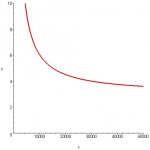I have a type of problem that i need some major help on. I am not getting at all how to do this. the problem is....
It costs a company $30,000 to begin production of a good, plus $3 for every unit of the good produced. Let x be the number of units produced by the company.
a.) Find a formula for C(x), the total cost for the production of x units of the good.
b.) Find a formula for the company's average cost per unit, a(x).
c.) Graph y=a(x) for 0< x <(or equal to) 50,000, 0<(or equal to) y <(or equal to)10.
d.) Explain in economic terms why the graph of a has the long-run behavior that it does.
e.) Explain in economic terms why the graph of a has the vertical asymptote that it does.
f.) Find a formula for a^-1(y). give an economic interpretation of a^-1(y).
g.) The company makes a profit if the average cost of its good is less than $5 per unit. Find the minimum number of units the company can produce and make a profit.
Steps to find the answers will be greatly appreciated.
Thanks,
alz92
It costs a company $30,000 to begin production of a good, plus $3 for every unit of the good produced. Let x be the number of units produced by the company.
a.) Find a formula for C(x), the total cost for the production of x units of the good.
b.) Find a formula for the company's average cost per unit, a(x).
c.) Graph y=a(x) for 0< x <(or equal to) 50,000, 0<(or equal to) y <(or equal to)10.
d.) Explain in economic terms why the graph of a has the long-run behavior that it does.
e.) Explain in economic terms why the graph of a has the vertical asymptote that it does.
f.) Find a formula for a^-1(y). give an economic interpretation of a^-1(y).
g.) The company makes a profit if the average cost of its good is less than $5 per unit. Find the minimum number of units the company can produce and make a profit.
Steps to find the answers will be greatly appreciated.
Thanks,
alz92

